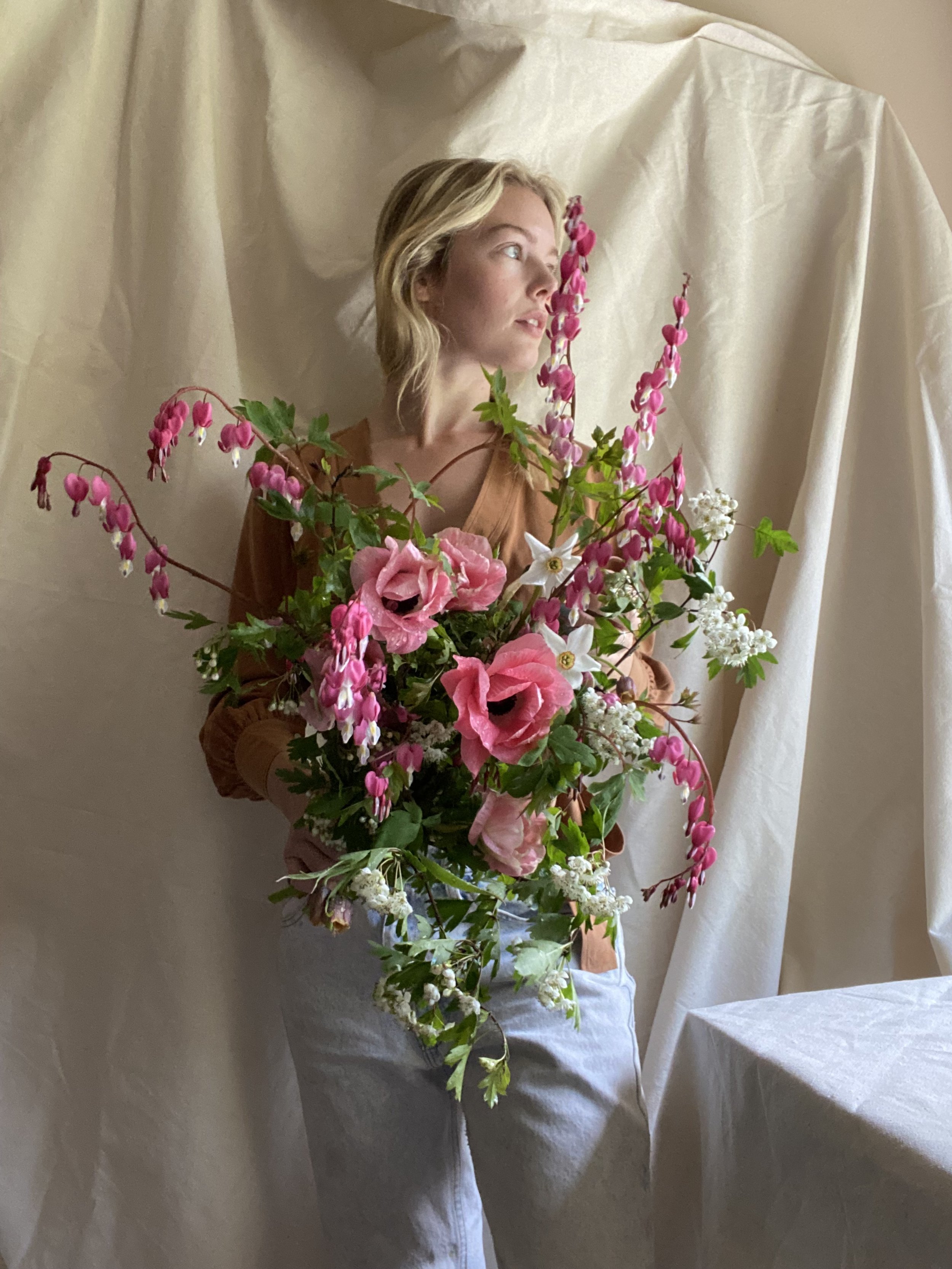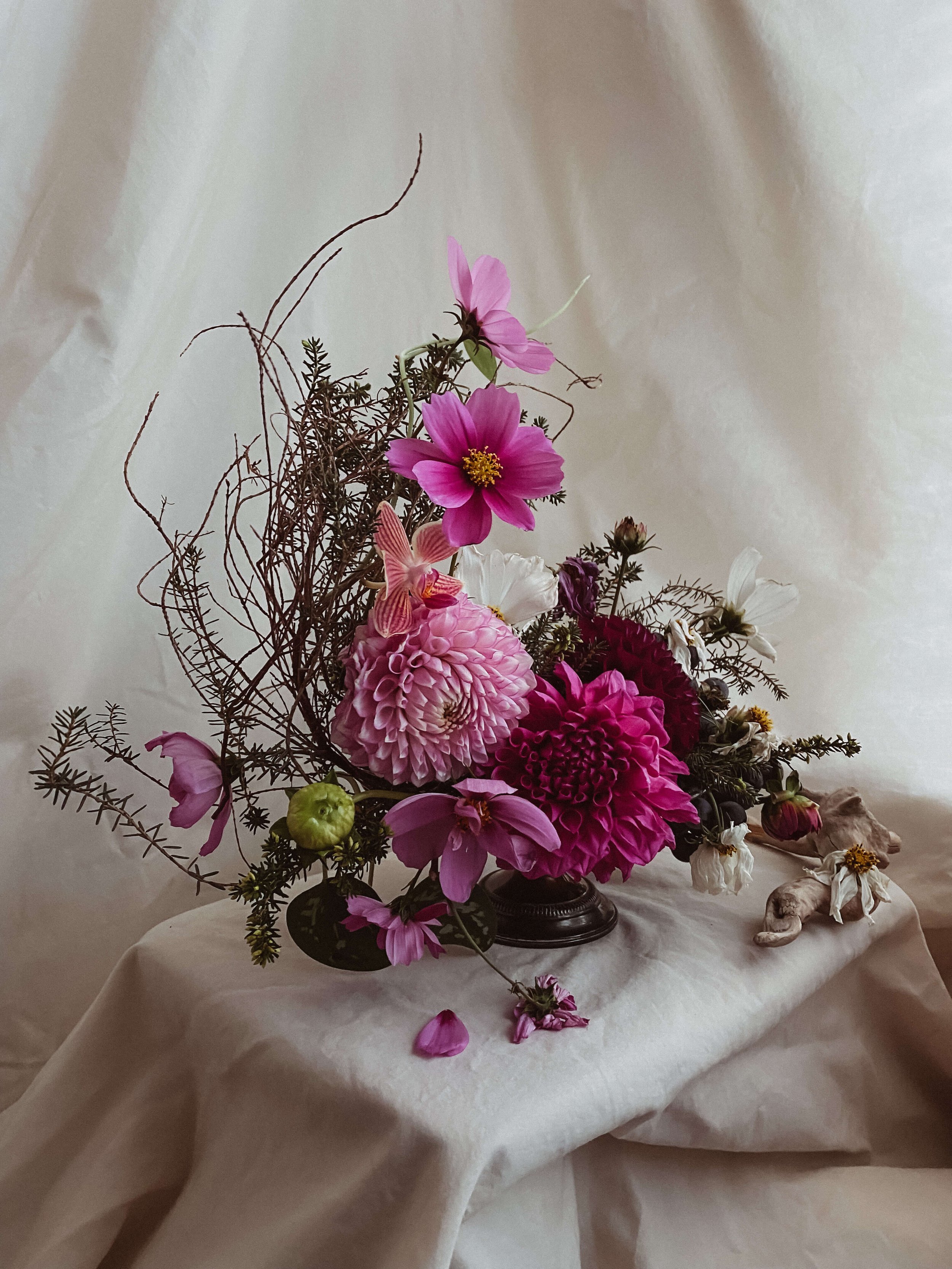CREATIVE CONVERSATIONS
Phosphorus Botanical
Rebecca Armstrong
is the owner and lead floral designer of Phosphorus Botanical. Born and raised in western Washington, she grew up wandering the Pacific Northwest’s forests and coast, which instilled in her a deep connection to the ecosystem of the natural world.
Hailing from a family of growers, explorers, fishers, habitat appreciators, and craftspeople, she learned how to garden, identify and protect native plants and birds, and understand the tides. These experiences with nature also inspired creative expression throughout her family, from handmade textiles and homemade jam to wood carvings and wildlife photography.
Rebecca has a background working in art galleries in Seattle and as an arts educator, most recently managing public programs at Cooper Hewitt Smithsonian Design Museum in New York, and the connections with the rhythms of nature are intrinsic to her own identity as an artist. With the nature-inspired floral work she creates through Phosphorus Botanical, Rebecca’s gorgeous, flowing designs reflect bountiful seasonality and evoke a sense of serenity and spaciousness.
Where you can find Rebecca
What’s your earliest memory involving flowers?
Since I was a baby my family has always spent lots of time outdoors, in the mountains and along the coast where we’re from. My parents are both big environmentalists and would love to identify special species of plants, animals, birds, and flowers and point them out to my brother and I (and sometimes quizzing us on what we learned), so we got a great education in native wildflowers and general habitat conservation. I remember lupine, trillium, bleeding hearts, paintbrush, and wild tiger lilies, among others, all growing in the woods where I explored.
Sometimes my mom and I would built fairy houses with toadstools and flowers while my dad would fish for trout, and so I always saw flowers as not only botanical specimens but sort of creatures of their own, which has influenced how I design with them. Every now and then, later, I’d open a book I’d taken on a camping trip to find some special stems pressed in between the pages.
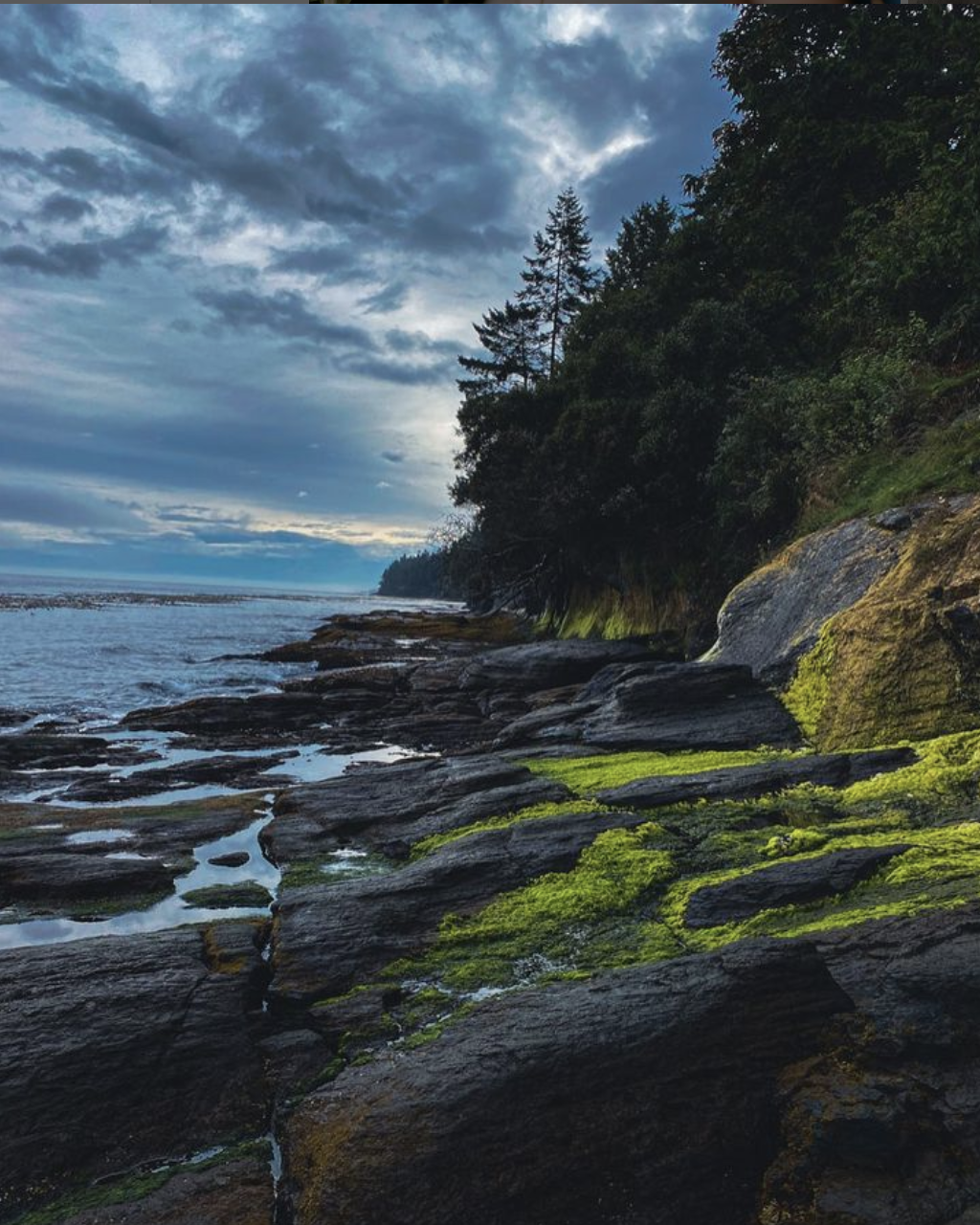
My parents also owned a shop that focused on habitat preservation, backyard birdwatching, and gardening, so teaching others about things like red flowering currant being very attractive to hummingbirds in the yard was something I learned through osmosis. I also watched my grandparents tending to plants and flowers in their gardens, and I learned more recently that my great-great uncle owned a flower shop in the town my family is from, and my grandma would help out there as a kid. So, I think I was always surrounded by a deep interest in both wildflowers and cultivated varieties and this was passed down from my family, becoming a huge part of who I am.
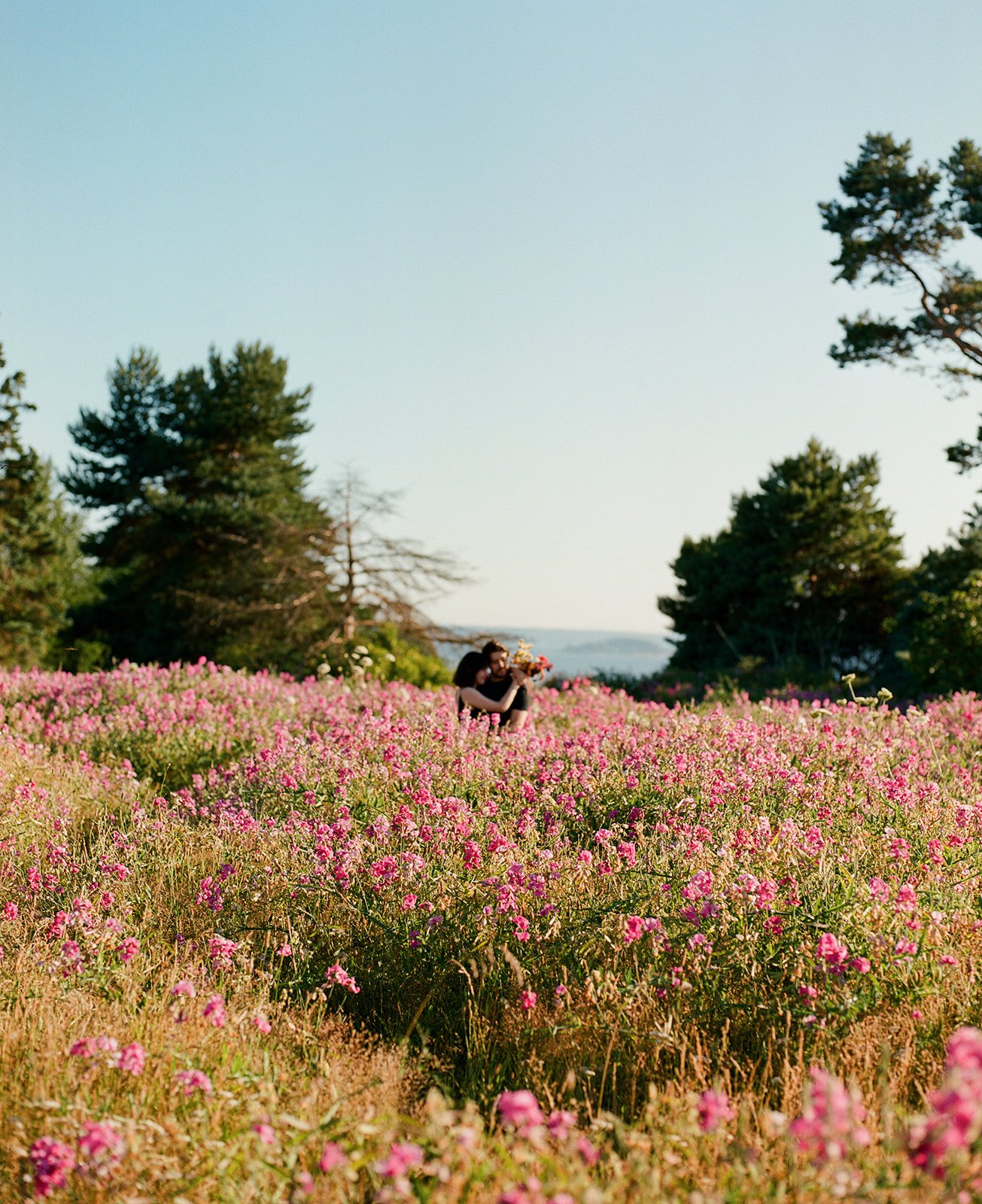
What was trajectory of your flower-related work?
I have always played with flowers and felt a natural connection to them that I’ve never questioned. But, scooping something beautiful out of your garden for your kitchen and learning how to design for large events and weddings are totally different practices!
I didn’t take any formal programs or go to a floral design school as some florists do. I learned by working – I worked in a flower shop in Brooklyn while I lived there and then on a small flower farm in the desert for a while, learning the growing side of the cut flower industry, then I started freelancing for other florists for large-scale events all over the country.
Working with so many talented people, I learned a lot of different ways of doing things, and honestly, everyone has their own preferences for designing, mechanics, logistics – all of it. I am so lucky to have gained experience and wisdom from some really special mentors along the way and will always be grateful for them!
What role do flowers & nature play in your life?
It’s just huge! Nature is a major part of who I am and my soul.
I travel a lot, and I like to travel solo – some people travel for food, culture, or architecture, but I’m usually on the hunt for some really special old trees, or earthly phenomenon like the darkest night sky, the highest peak, a special rare wildflower, a remote hike I’ve always wanted to do, or natural hot springs. It’s my favorite thing to be alone in the wild and have that peace and level of spiritual connection, and sometimes deep wonder, to be at the root of all that created us. It’s my church, probably. We are not separate from nature, or above it. We are a part of the great ecosystem, and it gives a great sense of perspective to spend time incorporated back into it as deeply as one can.
It’s also just a great remedy for feeling down, anxious, lonely, or overwhelmed. I’m an air- and fire-driven person in my demeanor, so leaning/laying upon something like a very old tree, or a large slab of river rock, or immersing myself in a natural body of water is all the balance I could really ever ask for.

“Trust that your creativity matters
and that you have a unique
vision to share with the world.”
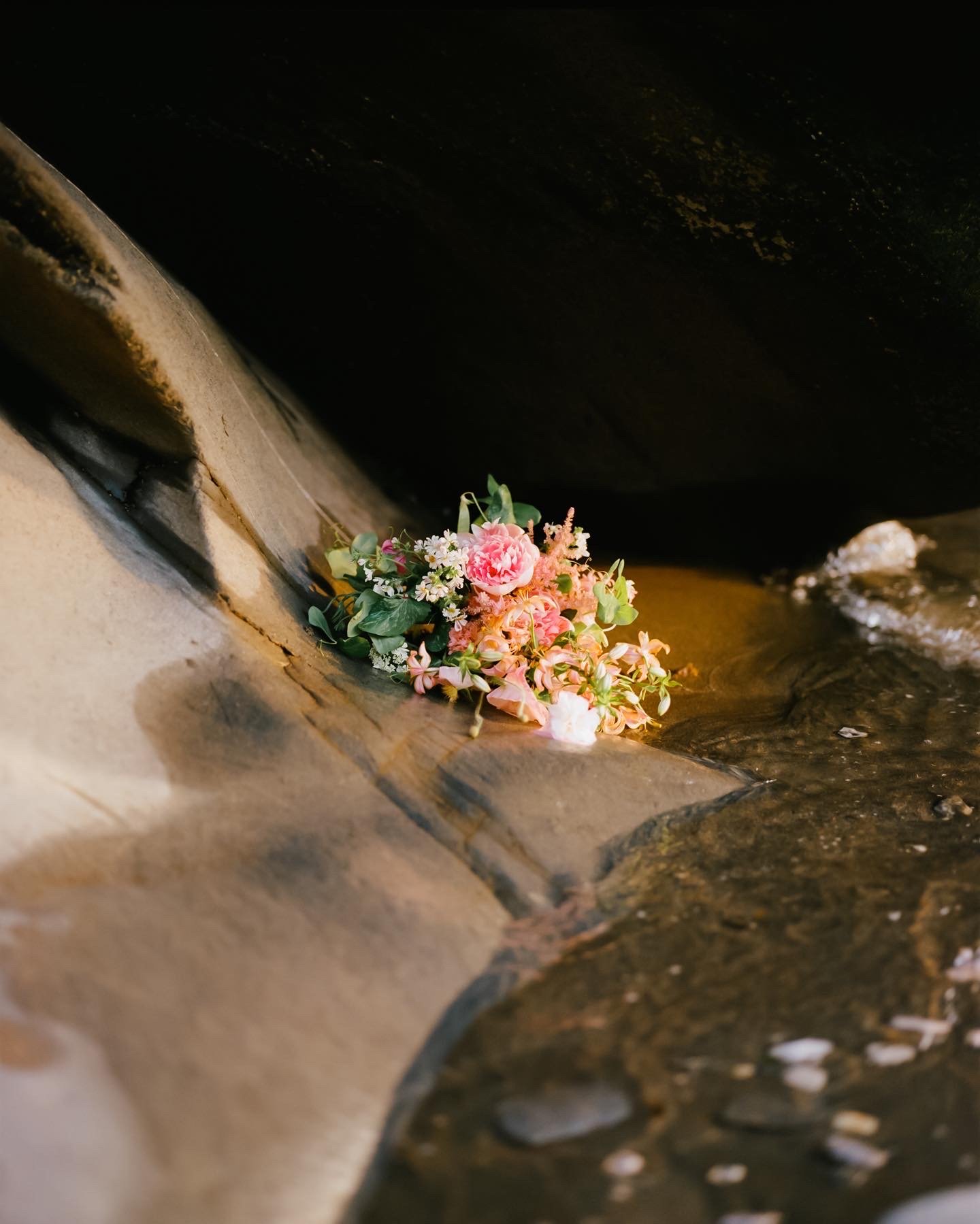


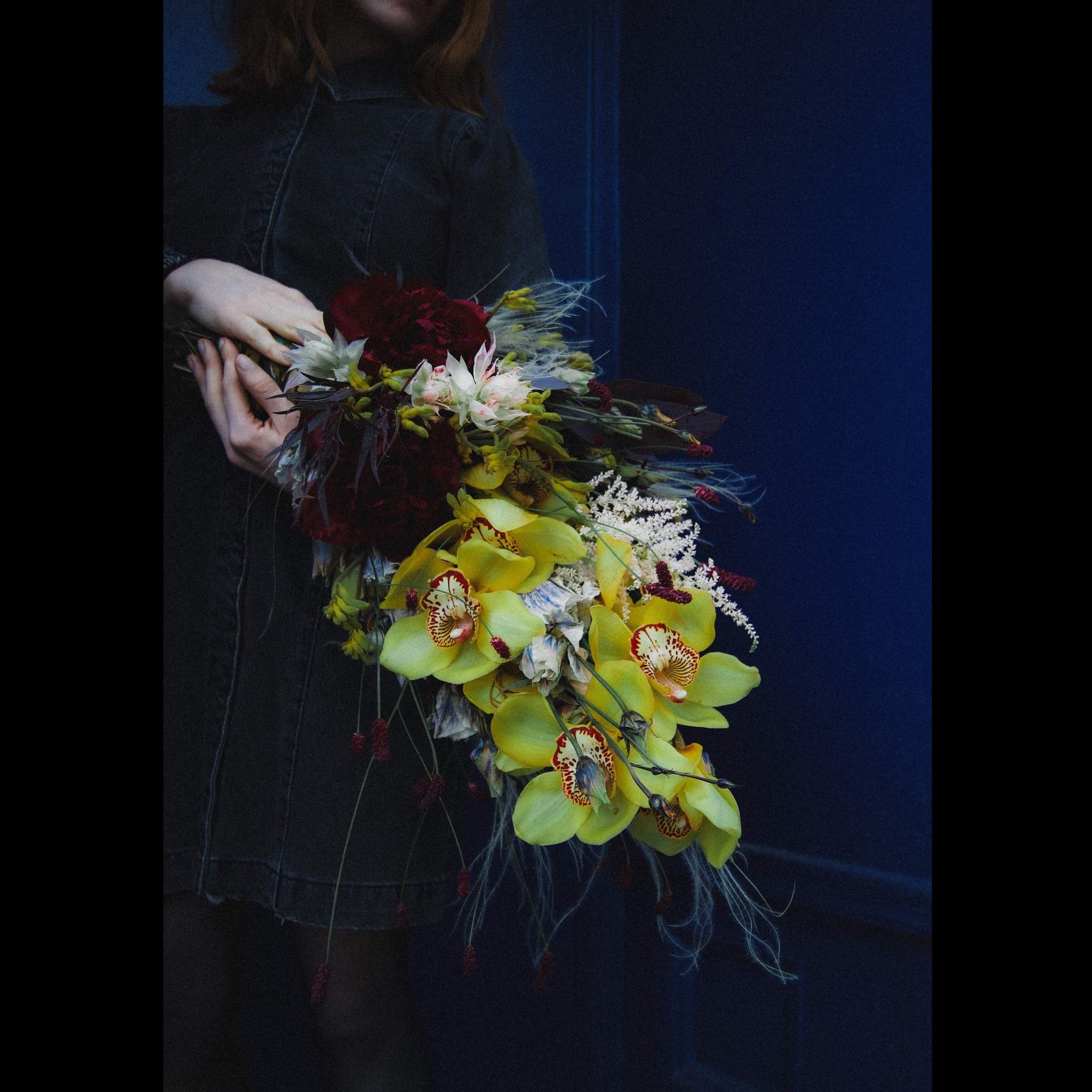
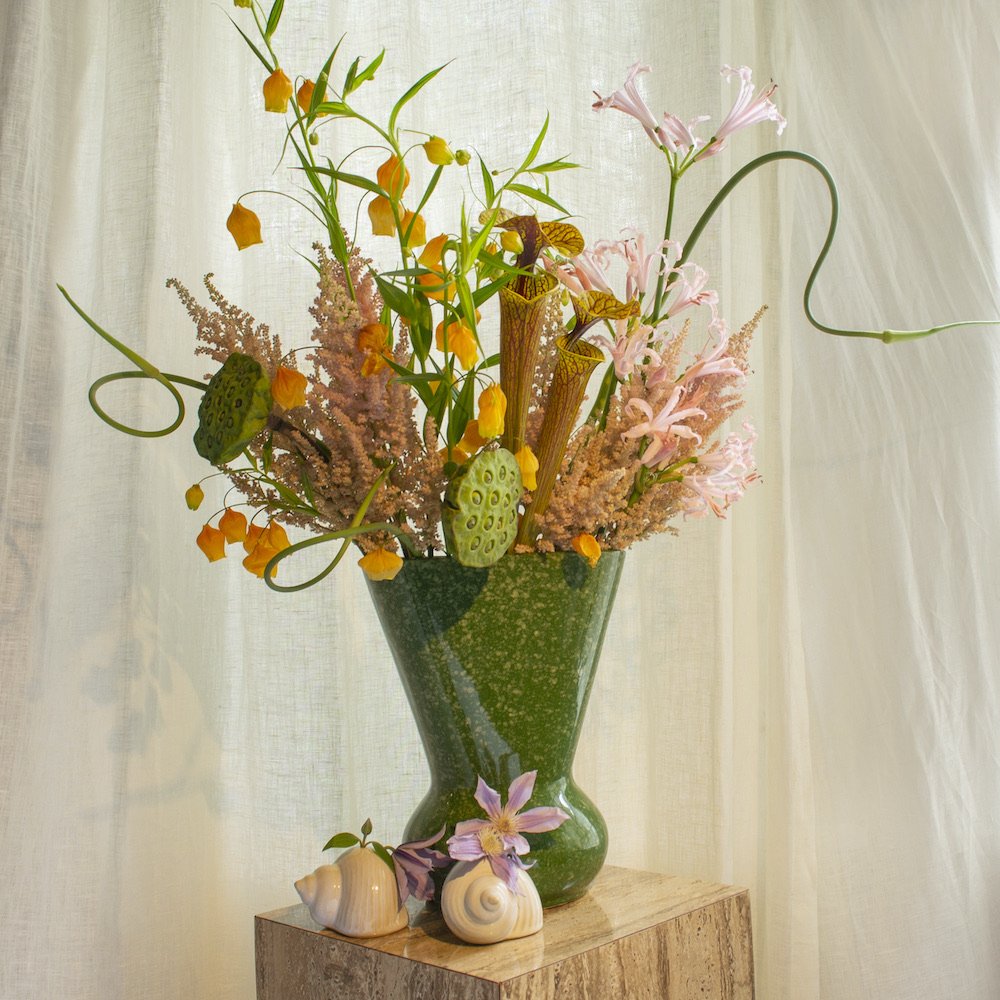

What does abundance mean to you?
I think part of it is perspective, to feel full and grateful for all you have. I also think it’s something you create. An abundant life is one where you feel aligned with your purpose, full of joy for what you spend your days doing (maybe not every day, but hopefully most of them!), and as part of a community that cares for and supports the people within it.
What are your thoughts on how flowers and connecting to nature can help to foster community?
I am a deep believer in the power of joy and beauty. Not beauty in an over-curated, competitive, aesthetic way, but beauty in forms that move people and inspire awe, wonder, and joy. Certain things have the power to do that, including music, color, nature, and flowers. We have so many problems in the world and should all prioritize working to make the world better on a deep level through action, policy, and education – but I also think that a pure form of making the world better is simply through being kind and sharing beauty on the day-to-day. We’re dealing with an epidemic of loneliness, mental health crises, collective trauma, and lots of people feeling uncertain or unseen. Small things can make a huge difference, and you truly never know what someone is going through, so showing up with some flowers from the garden or a shop can really turn someone’s day around – whether you know them or not.
I also hope that the momentum to shift the events and floral industry toward a more sustainable future continues – there are so many ways to love and provide flowers while being responsible environmental stewards, and I’m hopeful that the industry will make some big collective changes. If you’re a client, you can be part of this solution by booking wedding vendors and ordering flowers from florists who use sustainable practices in their work!
Can you share a bit about your process for connecting with and designing for your clients?
I always like to tap into who I am designing for on a deeper level if possible – so I sometimes like to start with asking questions about my clients' stories (how they met, who their loved one was if for a celebration of life, how they started their business, etc.) as well as what inspires them (favorite films, books, eras, music) or points of sentimentality that they want to include (a color, a memory, something they loved as a kid...).
If my clients feel comfortable opening up about these things, and they trust my artistic process, I love to take this information and run with it! It will often inform the palette I choose and the type of energy I bring to a design. I'm very inspired by film and music, fairy tales, and childhood memories – so I love connecting to people in this way and channeling some of that from them too. Since I love to bring in a little element of strangeness to my designs, I do like it when people are open to that :)
The other main part of my process is that because I love to work with what is in season and growing locally as much as possible, being a little flexible with ingredients is necessary. Sometimes what is available at the market on a wedding date changes year to year, so it's not always easy to predict what we'll have on hand, and while that can be challenging, it is also one of the most fun parameters to work with!
Overall, it always helps to have clients that trust my process, are a little open-minded, and are ok with giving me some details and wishes and then being open to whatever flows from the seasons and the well of creativity. It truly does allow me to create the absolute best, most inspired work!
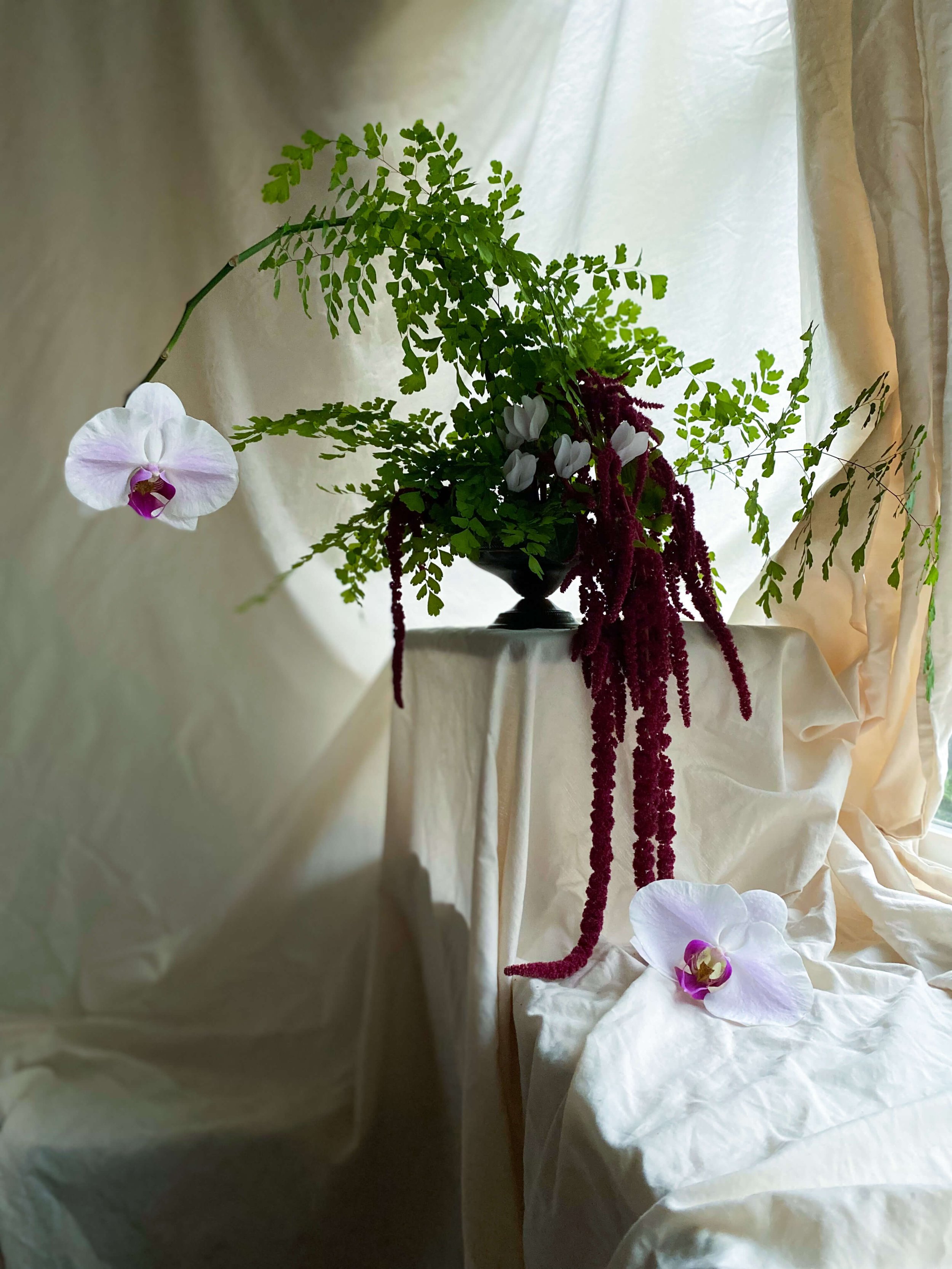
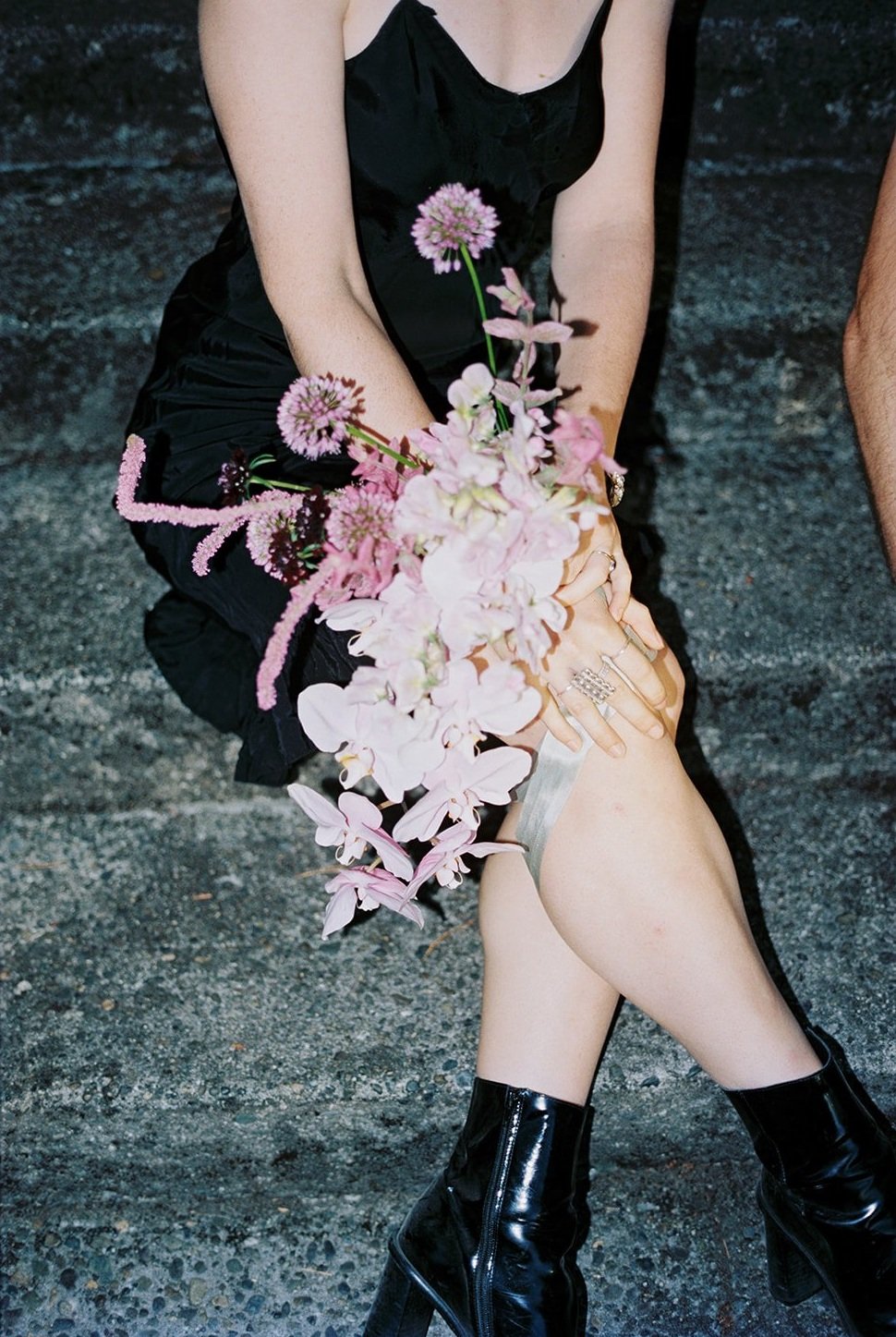
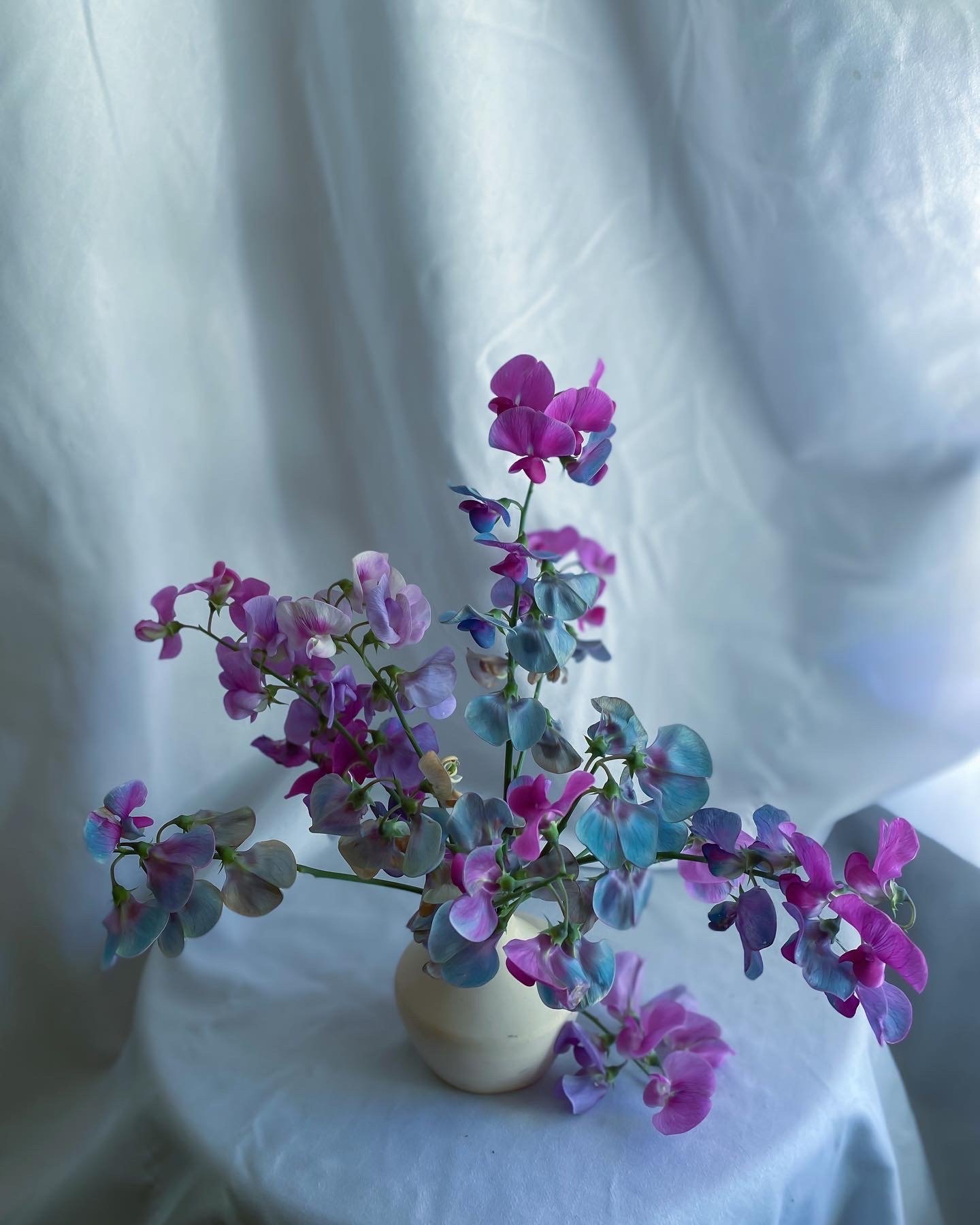
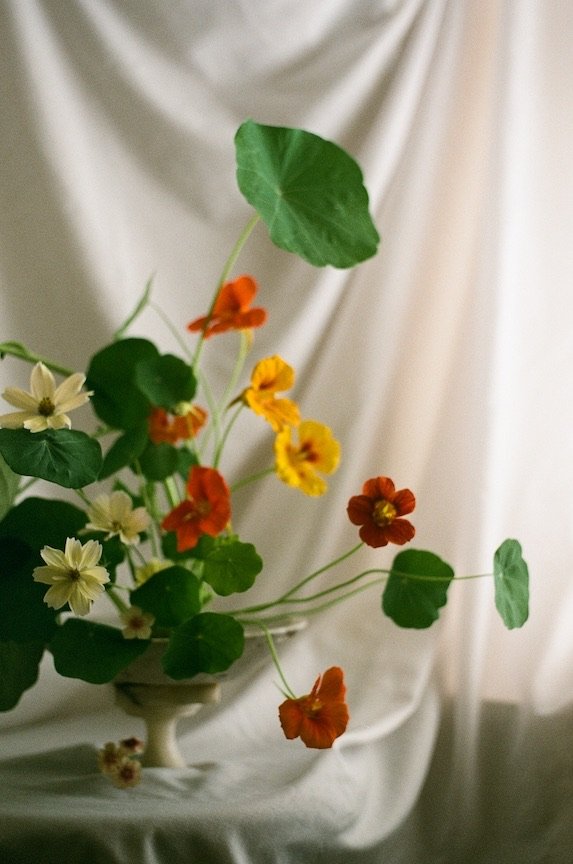
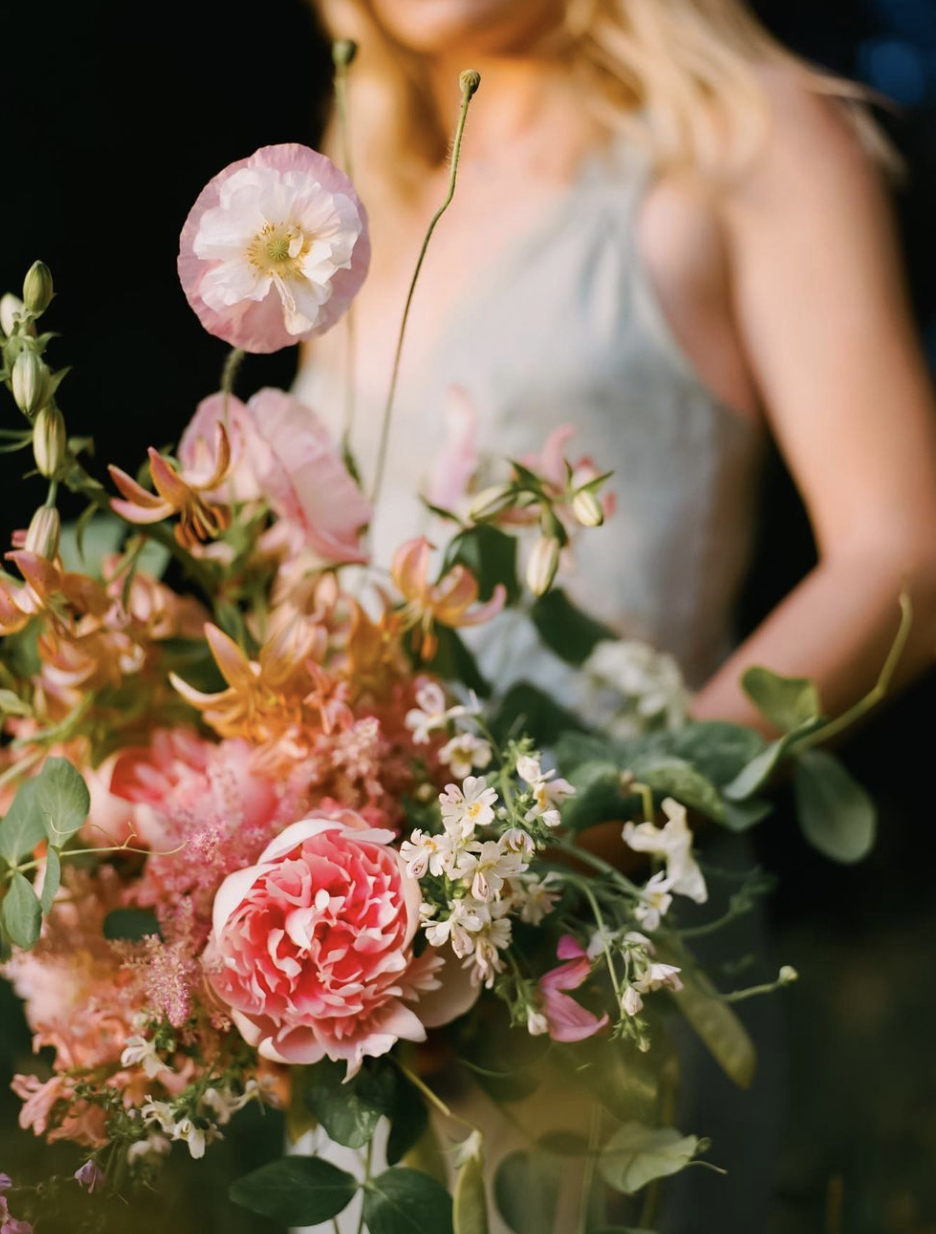
What advice would you share with others who are beginning to develop their creative styles and find their own way?
Just be authentic. Don’t get caught up in trends, or in what the algorithm is telling you it wants you to do (Reels! Dances! More words on your posts! Inspiring captions!) — just create what is coming right out of your heart, stay true to your style and preferences, and put that out there. Don’t try to be anyone you're not or look too much at other people’s work for inspiration. Trust that your creativity matters and you have a unique vision to share with the world.
Also, charge enough to support yourself (doing events is a TON OF WORK) and try to keep good boundaries around working. One of my big things is that I don’t like to text/DM about professional things – I would rather communicate via email so that my phone isn’t a constant source of work, but is instead a mainly a way to stay connected with family and friends. I work from my desktop at designated hours, and I keep my office and studio as places that are lovely, but separate from my personal time, as much as possible.
Handpicked
A few of Rebecca’s favorites…
Favorite flower
Bleeding heart. Cosmos. A very fragrant heady garden rose. It changes constantly!
Favorite season
SPRING, forever and always :) Not just for the flowers, but because of the energy – anticipation of life! Good smells in the air – mist and water, fresh soil, new leaves. Feeling renewed. Not getting too sunburned yet.
Favorite color
Red, always. That’s not for flowers, just my personal always-favorite color. It feeds me.
Favorite botanical destination
I couldn’t name just one – the forests of western Washington (for spotting native flowers like my favorite tiny bleeding hearts), the coasts of northern California, and the Brooklyn Botanic Garden.
Image credits: Rebecca Armstrong, Mary Kalhor, Derek Delahunt, and Courtney Lee
Thank you so much, Rebecca!
You may also like…
More interviews with floral-inspired artists who are blooming in creative directions
Tattoo artist - Oakland, California
Gardener & designer - Potomac River, West Virginia
Flower farmer & restaurant owner - Sonoma County, California
We respect your privacy, and when you click “Sign Up,” you are confirming that you agree that information you submit will be protected and used as permitted in our privacy policy and terms. If you do not agree to any of these terms, you may not submit this form.

